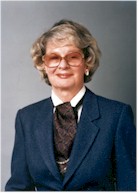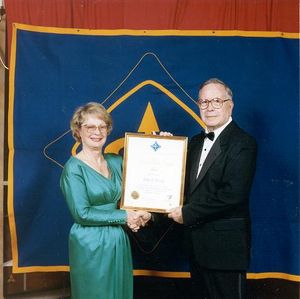Irene Peden
- Birthdate
- 1925
- Birthplace
- Topeka, KS, USA
- Associated organizations
- National Science Foundation
- Fields of study
- Radio
Biography
A 1974 IEEE Fellow "for contributions to radio science in the polar regions and for leadership of women in engineering," Irene Peden made pioneering strides for women in science research.
Irene C. Peden was born in Topeka, Kansas, in 1925. She received her bachelor degree from the University of Colorado in 1947, and her master's and Ph.D. in electrical engineering from Stanford University in 1958 and 1962 respectively. She joined the University of Washington faculty after completing graduate studies, staying there until her retirement as Professor Emerita of Electrical Engineering in 1994.
Irene was one of the UW professors participating in the Antarctic program that the university carried out during the 1960s and 1970s. With support from the Office of Polar Programs at the National Science Foundation (NSF), Irene and her research students conducted theoretical studies and developed new methods for measuring the electromagnetic properties of the Antarctic ice sheet and of the physically inaccessible underlying terrain.
At that time, NSF policy dictated that principal investigators of Antarctic research projects should spend time on-site in order to gain a direct understanding of the region and of the extreme difficulties confronting polar experimental work. Scientists had to battle freezing temperatures, spartan accommodations, isolation, long hours, and a monotonous diet of canned, frozen, and dried food. Irene, then a 45-year old associate professor, had worked on the Antarctic grant for several years already, and hence she was long overdue to make the trip. The problem was that women hadn't even been permitted to do research on the Antarctic coast at that time, let alone in the interior, and the Navy barred her participation. Only after the summer of 1969, when a team of four women geochemists were able to do research in the coast, could Irene get permission to make her trip to the interior.
Irene arrived at the McMurdo station in Antarctica in late October 1970. She faced many pressures, in addition to the difficulties of doing polar experimental work. She never received a shipment of crucial equipment needed to carry out her project. Meanwhile, the NSF station chief in McMurdo was radioing to her that the work must be completed on time, and if not, there would not be another woman on the Antarctic continent for a generation. Irene and the station staff managed to improvise a substitute for the missing equipment. They worked on a grueling schedule to make up for lost time, and they were at last able to achieve their objectives. The experiment was a total success, and it served to open the doors for women in science and engineering research in Antarctica for generations to come.
In 1993 Irene was elected to the prestigious National Academy of Engineering with a distinguished record of technical firsts to her name. A rock in the Antarctic named after Peden stands as a small monument to a great triumph for science and for women.

